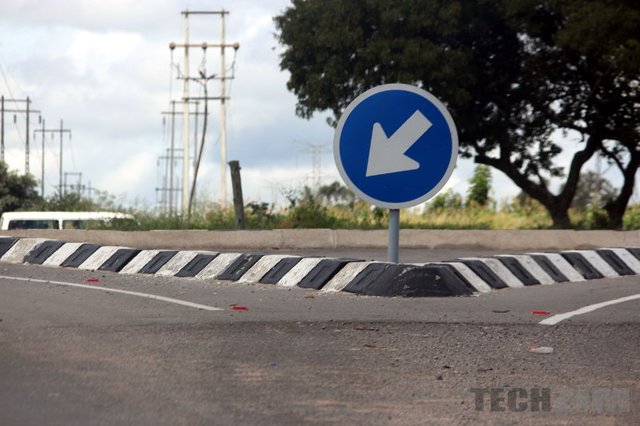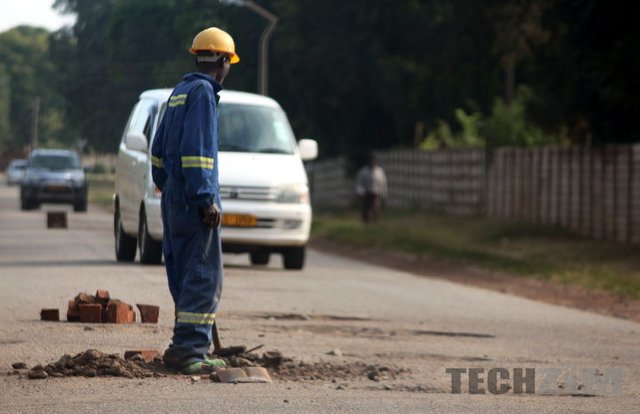“Everything you wanted to know about the contentious Bitcoin upgrade” but were afraid to ask

You may have heard bitcoin likened to a currency or commodity. It’s both of those things actually. Bitcoin is also a third thing – a payment network. What confuses most people that are new to bitcoin is how the word ‘bitcoin’ is interchangeably used to refer to all these 3 things: a currency, a commodity and a payment network.To understand the upgrade contention that is happening in the bitcoin space right now, let’s think of bitcoin as a payment network. So, throughout this blog post, I will use the word Bitcoin (with an uppercase B) to mean a payment network.Bitcoin is like a road because when you send money over a payment network, it’s as if the money is traveling on a road from you to the recipient. Let’s liken Bitcoin to the road from the CBD to Westgate in Harare.
What is the problem with bitcoin right now?
When the road from the CBD to Westgate (we’re going to call this road ‘Bitcoin’) was built in 2009, it was the fastest and cheapest way to move between the CBD and Westgate so it has been increasingly getting popular. The third reason that Bitcoin has been getting popular is because it was not controlled by ZINARA, so it was, what people in the industry call, ‘decentralised’. ZINARA is like a government and they have a lot of power in the highways. They also have a plethora of tollgates that they charge you for using the highways. Decentralisation is perhaps the biggest thing that has attracted people to Bitcoin.Bitcoin today is now so popular that it cannot accommodate everyone who is using it (they way it used to) and this is leading to a lot of congestion. Congestion is caused by a group of vehicles. Let’s call this group of vehicles a ‘block’. And let’s say that congestion happens when the “blocks are full”.Because Bitcoin blocks are full, your car now consumes more fuel when you travel between the CBD and Westgate. Let’s call this fuel you consume, a ‘miner’s fee’.The first problem is that everyone wants to use Bitcoin while this road does not have the capacity to accommodate all the users. The second problem is that the vehicle owners (let’s call these the ’stakeholders’) cannot agree on a solution.
Who are these Stakeholders?
There are many people who use Bitcoin, we shall generalise and put them into 3 broad groups for simplicity:
- The people who maintain the roads. Let’s call these people ‘Bitcoin miners’. These people are using their own resources to maintain Bitcoin.
It’s important to note that the group of Bitcoin miners is a broad group that ranges from large organisations such as the city council to individual miners that look like this guy

- The kombi drivers are usually part of a larger company that has deep pockets and can collude with the city council to get ranks where people can board the kombi. They think the blocks are getting full because the roads are narrow and see a wider road as a solution. Let’s call this group the ‘big blockers’.
- The mushikashikas who usually own their vehicle and are using that vehicle to compete with kombis. They feel that getting bigger blocks will result in an unfair advantage for kombis so they want the width of the road to remain as it is now. Let’s call this group the ‘small blockers’.
What are the possible solutions?
All the different stakeholders to agree that Bitcoin needs an upgrade. But Bitcoin is decentralised and an upgrade is only possible if there is broad consensus on how to the upgrade will be made. The stakeholders have to reach this agreement before 1 August and if they can’t, the road is going to fork into different roads. These are the different solutions the Bitcoin stakeholders want are:
- The big blockers want a wider road period. Because they don’t want a limit of the width of the road, we shall call this solution ‘Bitcoin Cash’. With good reason, too: their argument is that Bitcoin needs to scale so that it can have the same capacity as (or even bigger than) the highways. Bitcoin right now has only one lane. Bitcoin Cash wants bitcoin to be widened so that it gets 8 lanes. This makes sense if you think of Bitcoin having the same capacity to accommodate the kind of traffic volume that goes on the highways (VISA or MasterCard).
The big blockers have even got a website. - The small blockers are more concerned about Bitcoin’s decentralisation and they feel that Bitcoin Cash will make Bitcoin more centralised. They have a good argument too: their biggest value proposition to their customers is their manoeuvrability and if we have bigger blocks, control of Bitcoin will shift from individuals to companies that own kombis thus making Bitcoin more centralised. And if Bitcoin is more centralised it’s easier for governments and regulators to attack – no one wants that. Maybe except the governments and regulators.
Small blockers think that Bitcoin’s capacity can be increased significantly if we remove certain types of vehicle from the road. Let’s call these types of vehicles they are proposing we remove, ‘witnesses’. They are proposing that we put signatures on the different route – a solution they are calling ‘Segregated witness’. They already have a proposal for the upgrade and this proposal is called BIP 141. - Another likely outcome is that Bitcoin will fork and we shall end up with two separate roads: one for small blockers a (Bitcoin) and another for the big blockers (Bitcoin Cash).
Why you should care
- Transactions will likely be slower on starting 1 August
- Many exchanges (including ours, BitcoinFundi) and merchants will suspend Bitcoin deposits and withdrawals on 1 August 2017 and will keep the suspension until there is more clarity on the forking situation.
- It is likely that there are going to be 2 different forks of Bitcoin initially on 1 August. It’s also likely that one fork may emerge the winner. The time between the fork and the emergence of a winner is especially important if you are a miner because if you mined on the fork that doesn’t emerge as the winner, then all your earnings can be wiped out.
- Another risk (which we’ll call ‘replay risk’), is that, while there are two forks, you can make a transaction to send someone bitcoin on one fork.
I tried to make this article really simple to answer and I have not exhausted all the possible likely scenarios. If you have any technical questions or would like to share what you think is going to happen, I would love to hear your thoughts in the comments section below.
This article originally appeared on TechZim.
Congratulations @tkembo! You have received a personal award!
Click on the badge to view your Board of Honor.
Do not miss the last post from @steemitboard:
SteemitBoard World Cup Contest - The results, the winners and the prizes